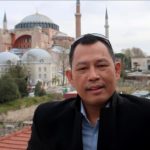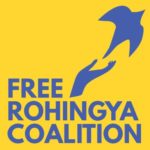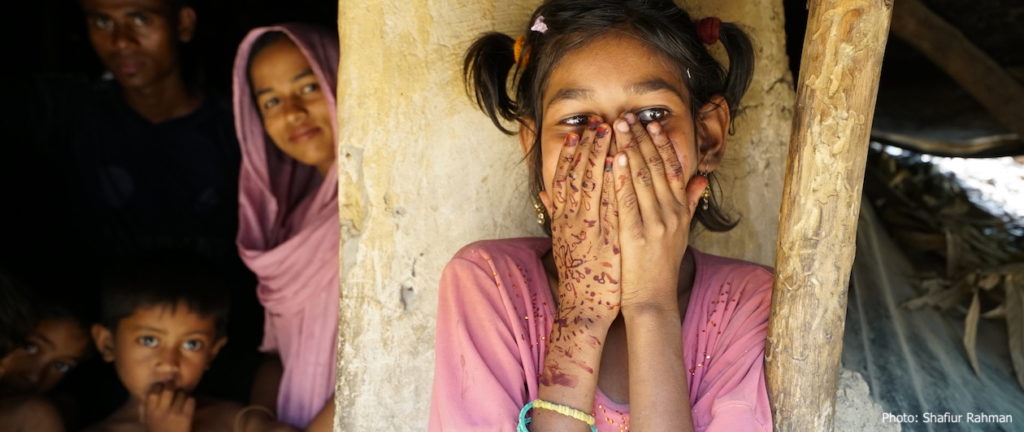Factsheet on the Rohingya
ASIA-UPDATES ON MYANMAR ROHINGYA GENOCIDE, 20 Jun 2018
Free Rohingya Coalition – TRANSCEND Media Service
Group Identity, Citizenship, and Persecution [1]
Who are the Rohingyas?
Rohingyas are a native, pre-colonial ethnic minority group of Rakhine State of Western Myanmar (formerly Burma), which shares 170-miles long modern-day borders with Bangladesh (formerly East Pakistan).
Rohingya people view Myanmar as the country to which they belong. They also share a linguistic and cultural affinity with communities in Chittagong, Bangladesh – an affinity which is widely mis-perceived as being outsiders from Bangladesh.
Their ethnic identity, “Rohingya” which is predominantly Muslim – as opposed to 16 other “Muslim groups” with diverse ethnic backgrounds found in Burma or Myanmar – has been documented in primary historical sources,[i] which date back to the 18th century, and decades before the British rule begun in Rakhine (then known as Arakan or Aracan to the outside world) in 1824.
The British colonial censuses of the 19th century, which were based on the then prevailing pseudo-scientific European conceptions of “race” and conducted for the sake of administrative convenience and control of the subjugated populations, did not record Rohingyas under their ethnic identity but instead used linguistic and religious markers such as “Bengali (speakers)” or “Mohamedan”, just as they recorded many of today’s official “ethnic nationalities” under different categories and markers.
When Britain gave up Burma as a colonial possession and the latter became independent in 1948, both the newly independent government of Prime Minister U Nu and the military’s Revolutionary Council Government which ousted Nu’s elected government in 1962 and ruled as a military junta, officially recognized Muslim Rohingyas of Rakhine as an ethnic minority of the Union of Burma. They were granted full and equal citizenship rights.[ii]
Therefore, the typical portrayal of Rohingyas, in both international media and international policy circles, as a people who have lived in Burma for generations but not recognized as natives of Western Myanmar nor granted citizenship, is factually incorrect. They are as “indigenous” as any other ethnic group that is officially recognised by the Burmese state as an “ethnic nationality”.
What is unique about Rakhine as a western state with 170-miles borders with Bangladesh, as opposed to other Eastern and Northern states (provinces) that share over 1,000 miles each with China and India?
First, Rakhine, in effect, is a colony of the majority Burmese Buddhists, not dissimilar to Scotland and N. Ireland or Wales within the United Kingdom. Second, the majority of the residents of Rakhine are Buddhists who consistently outnumber Rohingya Muslims by 3:1. Third, Rohingya Muslims have more cultural, religious and ethnolinguistic similarities with the adjacent Chittagonian communities in the adjacent Chittagong Province of the old East Bengal of present day Bangladesh while Rakhine Buddhists are closer to the colonizing Burmese majority in ethno-linguistic, religious and cultural terms. Fourth, unlike the rest of the Muslim populations in Myanmar only the Rohingyas have their own distinct ancestral region– namely Northern Arakan or Rakhine – where they are concentrated as the majority community.[iii] Fifth, importantly, unlike China’s southern most provinces and India’s Northeast territories on Myanmar’s borders, Bangladesh is predominantly Islamic. Sixth, the Burmese Armed Forces have, since independence, shared the colonial-era resentment and fear[iv] of people with Indo-Aryan features (people of Indian sub-continent ancestry) and more specifically, Muslims. Since the military rule of 1962, Burma’s leaders institutionalized Muslim-free policies within the military. And seventh and finally, the Muslim Rohingyas of Rakhine, with historical, cultural and demographic ties to Chittagong, are first viewed by the Burmese military leaderships as a potential proxy for the State of Bangladesh or trojan horse with an intention to annex Northern Rakhine State.
Ironically, it was the Buddhist Burmese feudal kingdom that annexed Arakan or Rakhine in December 1784, through a brutal military conquest.[v] In 1826, the Burmese conquerors lost Rakhine to Britain as the result of the military defeat in the First (of 3) Anglo-Burmese War. In 1948, the Burmese regained its control over Rakhine annex. From the perspective of Rakhine Buddhist nationalists, Burma’s independence was nothing more than the release of Rakhine as an annex from the clutches of British colonial rule into the hands of the Burmese colonialists.
How do the Burmese public view the Rohingya?
Rohingyas are widely seen by the Burmese public, including other ethnic minorities and other Muslim groups, as “Bengalis whose ancestors migrated to Western Myanmar only during the British colonial rule as agricultural seasonal labourers”. This is the view Aung San Suu Kyi herself shares with the Burmese military leaders who she is in partnership with.
But this is the direct outcome of government propaganda, not reflecting the factual backgrounds about the group, but the effectiveness of decades of official acts of propaganda including erasing and/or denying any official and historical references to Rohingya identity, presence and history in Burma.
Why do the Burmese public reject and hate the Rohingya people so much?
Until the two bouts of organized mass violence primarily against Rohingya communities across Rakhine State, the public in Myanmar generally were not familiar with the name Rohingya, nor were they cognizant of the fact that there was a people called Rohingya. Instead what the Burmese public learned from the official history textbook about the post-independence national history of Myanmar is that there were Muslims in Rakhine state that waged an armed separatist movement under the banner of “Mujahidins”, whose aim was to join up with the then East Pakistan (and since 1971 Bangladesh). Myanmar military that have had monopoly control over all state institutions with direct and indirect influence over public opinion and sentiment, namely, schools, religious organizations, economic organizations, universities, bureaucracy, and media, succeeded in erasing the word Rohingya from public discourses. When in June and October 2012, violence in Rakhine state erupted in the form of sectarian conflicts or communal conflicts between Rakhine Buddhists and Rohingya Muslims (as well as other Muslims) it became headlines news, in Myanmar and around the world.
Myanmar state media, government spokespersons and national leaders including ex-general and President Thein Sein (2010-15), put into nationwide circulation the official tale of “Rohingyas” as colonial-era Bengali migrants assuming the “fake ethnicity” as “Rohingya” with a history of the separatist movement.[vi]
This official discourse about the Rohingya has been adopted by all non-Muslim segments of the Burmese society, including majoritarian Buddhists and minorities of all denominations for the reason that the colonial-era general anti-“Indian” and subsequently anti-Muslim racism continues to pervade the social fabric of Myanmar.
It is the military and the set of governing institutions, including Burmese language state media, that systematically disseminates the fear and loathing of Rohingyas as a “fake” ethnic group which is viewed as attempting to take a slice of Rakhine region and join it up with Muslim Bangladesh. The result is a pervasive and blinding anti-Rohingya racism, which in turn facilitates public rejection of any official documentation and historical evidence of Rohingya being an ethnic group of Myanmar, formerly endowed with equal and full citizenship rights, with an administrative region of their own.
What do the Rohingya people want and need?
All that the Rohingya people demand and need is to live in their own ancestral birthplace of Rakhine State of Western Myanmar, peacefully alongside other non-Rohingya and non-Muslims including the state’s majority Buddhist Rakhine. They want their equal rights and citizenship restored and their ethnic identity respected and honoured as before.
Rohingya leaders, activists and organization do not call for secession, or the establishment of a new and independent country, or making Northern Rakhine state an annex of Bangladesh.
Millions of displaced and deported Rohingyas in Bangladesh and in diaspora, unequivocally wish to return to Rakhine and live as Myanmar citizens. They however, need guarantees of safety, restoration of full and equal citizenship rights, and reintegration into the Burmese society at large, while being allowed to retain their own ethnic identity and culture. After 40-years of periodically violent persecution and systematic destruction and erasure their identity, group existence and history,[vii] Rohingyas are rightly extremely distrustful of Myanmar’s verbal assurances and promises. They want and need concrete international protection to return to their birthplace and rebuild their communities and livelihoods from where more than half of their population have been deported across Myanmar’s national boundaries and into Bangladesh.[viii]
NOTES:
[1] Compiled and written by Maung Zarni, PhD (University of Wisconsin at Madison). The author is a Burmese Buddhist from an extended family whose members have served in Myanmar Tatmadaw or Armed Forces for 3 generations since its inception in 1942. Zarni himself was a military cadet-admit to the Officers Training Corp (Teza-10 Intake), 1979. His late great-uncle, Zeya Kyaw Htin Lt. Colonel Ant Kywe (Recipient of the Union of Burma’s National Chronicle Grade I Award), was Deputy Commander of All Rakhine Command and Deputy Chief of the predominantly Rohingya Mayu District Administration (1961-63).
[i] Francis Buchanan. “A Comparative Vocabulary of Some of the Languages Spoken in the Burma Empire.” Asiatic Researches 5 (1799): 219-240. Reprinted in SOAS Bulletin of Burma Research, Vol. 1, No., 1, Spring 2003, ISSN 1479-8484 and accessible at https://www.soas.ac.uk/sbbr/editions/file64276.pdf
[ii] “Rohingyas are equal and full citizens and an ethnic minority integral to the Union of Burma”: Myanmar Military Leadership, July 1961 (See both unofficial English translation and the Burmese original transcript here: https://maungzarni.net/en/news/rohingyas-are-equal-and-full-citizens-and-ethnic-minority-integral-union-burma-myanmar-military ) Also see Gregory Poling, “Separating Fact from Fiction about Myanmar’s Rohingya.” Center for Strategic and International Studies (CSIS), Washington, DC, 13 Feb 2014 at https://www.csis.org/analysis/separating-fact-fiction-about-myanmar%E2%80%99s-rohingya
[iii] See Official Encyclopedia of Burma (Burmese), Literary House, Union of Burma Government Press, V. 9, under “Mayu District” (of Rohingya), 1964.
[iv] Maung Zarni & Natalie Brinham, Reworking the Colonial-Era Indian Peril: Myanmar’sState-Directed Persecution of Rohingyas and Other Muslims, The Brown Journal of World Affairs, V. XXIV Issue I, Fall/Winter, 2017, pp. 53-76. Accessible at http://bjwa.brown.edu/24-1/reworking-the-colonial-era-indian-peril-myanmars-state-directed-persecution-of-rohingyas-and-other-muslims1/
[v] Michael W. Charney, “A State Myth of “National Race” and the Tatmadaw’s War on the Rohingya and other Myanmar Ethnic Groups” (Presentation version with no footnotes), Berlin Conference on Myanmar’s Genocide, Berlin, Germany, 26 Feb 2018, at https://www.maungzarni.net/en/news/professor-michael-charney-soas-identities-and-histories-rakhine-and-rohingya
[vi] David Mepham, Dispatches Burma: “Excuse me, Mr. President…”, Human Rights Watch UK, London, 19 July 2013 at https://www.hrw.org/news/2013/07/19/dispatches-burma-excuse-me-mr-president
[vii] Maung Zarni & Natalie Brinham, “Waves of Genocidal Terror against Rohingyas by Myanmar and the Resultant Exodus Since 1978.” The Middle East Institute, American University, Washington DC, 14 Nov 2017 at http://www.mei.edu/content/map/waves-genocidal-terror-against-rohingyas-myanmar-and-resultant-exodus-1978 and see also “An Evolution of Rohingya Persecution in Myanmar: From Strategic Embrace to Genocide.” The Middle East Institute, American University, Washington DC, 20 Apr 2017 at http://www.mei.edu/content/evolution-rohingya-persecution-myanmar-strategic-embrace-genocide For the most comprehensive historical analysis of Myanmar’s persecution of Rohingyas, see Maung Zarni & Alice Cowley (aka National Brinham), “The Slow-Burning Genocide of Myanmar’s Rohingya.” Pacific Rim Law & Policy Journal, volume 23 no.3, June 2014, pp.683-754. Accessible at http://digital.law.washington.edu/dspace-law/handle/1773.1/1377
[viii] Honourable Irwin Cotler (P.C., O.C.) former Minister of Justice and Attorney General of Canada. “Protected Return to Protected Homeland”, Berlin Conference on Myanmar Genocide, Jewish Museum of Berlin, Germany, 26 Feb 2018. View https://www.youtube.com/watch?v=2RCGPjyyjU4
Download Factsheet on the Rohingya in MS Word and PDF formats here: https://drive.google.com/open?id=1cWw2wy2uc_RYO_qiMLQy7R117Q30bGNh
_____________________________________________
 A Buddhist humanist from Burma, Maung Zarni is a member of the TRANSCEND Network for Peace Development Environment, former Visiting Lecturer with Harvard Medical School, specializing in racism and violence in Burma and Sri Lanka, and Non-resident Scholar in Genocide Studies with Documentation Center – Cambodia. His analyses have appeared in leading newspapers including the New York Times, The Guardian and the Times. Among his academic publications on Rohingya genocide are The Slow-Burning Genocide of Myanmar’s Rohingyas (Pacific Rim Law and Policy Journal), An Evolution of Rohingya Persecution in Myanmar: From Strategic Embrace to Genocide, (Middle East Institute, American University), and Myanmar’s State-directed Persecution of Rohingyas and Other Muslims (Brown World Affairs Journal, forthcoming). He holds a PhD (U Wisconsin at Madison) and a MA (U California), and has held various teaching, research and visiting fellowships at the universities in Asia, Europe and USA including Oxford, LSE, UCL Institute of Education) , National-Louis, Malaya, and Brunei. He is the recipient of the “Cultivation of Harmony” award from the Parliament of the World’s Religions (2015).
A Buddhist humanist from Burma, Maung Zarni is a member of the TRANSCEND Network for Peace Development Environment, former Visiting Lecturer with Harvard Medical School, specializing in racism and violence in Burma and Sri Lanka, and Non-resident Scholar in Genocide Studies with Documentation Center – Cambodia. His analyses have appeared in leading newspapers including the New York Times, The Guardian and the Times. Among his academic publications on Rohingya genocide are The Slow-Burning Genocide of Myanmar’s Rohingyas (Pacific Rim Law and Policy Journal), An Evolution of Rohingya Persecution in Myanmar: From Strategic Embrace to Genocide, (Middle East Institute, American University), and Myanmar’s State-directed Persecution of Rohingyas and Other Muslims (Brown World Affairs Journal, forthcoming). He holds a PhD (U Wisconsin at Madison) and a MA (U California), and has held various teaching, research and visiting fellowships at the universities in Asia, Europe and USA including Oxford, LSE, UCL Institute of Education) , National-Louis, Malaya, and Brunei. He is the recipient of the “Cultivation of Harmony” award from the Parliament of the World’s Religions (2015).
Go to Original – freerohingyacoalition.org
DISCLAIMER: The statements, views and opinions expressed in pieces republished here are solely those of the authors and do not necessarily represent those of TMS. In accordance with title 17 U.S.C. section 107, this material is distributed without profit to those who have expressed a prior interest in receiving the included information for research and educational purposes. TMS has no affiliation whatsoever with the originator of this article nor is TMS endorsed or sponsored by the originator. “GO TO ORIGINAL” links are provided as a convenience to our readers and allow for verification of authenticity. However, as originating pages are often updated by their originating host sites, the versions posted may not match the versions our readers view when clicking the “GO TO ORIGINAL” links. This site contains copyrighted material the use of which has not always been specifically authorized by the copyright owner. We are making such material available in our efforts to advance understanding of environmental, political, human rights, economic, democracy, scientific, and social justice issues, etc. We believe this constitutes a ‘fair use’ of any such copyrighted material as provided for in section 107 of the US Copyright Law. In accordance with Title 17 U.S.C. Section 107, the material on this site is distributed without profit to those who have expressed a prior interest in receiving the included information for research and educational purposes. For more information go to: http://www.law.cornell.edu/uscode/17/107.shtml. If you wish to use copyrighted material from this site for purposes of your own that go beyond ‘fair use’, you must obtain permission from the copyright owner.
Read more
Click here to go to the current weekly digest or pick another article:
ASIA-UPDATES ON MYANMAR ROHINGYA GENOCIDE:

